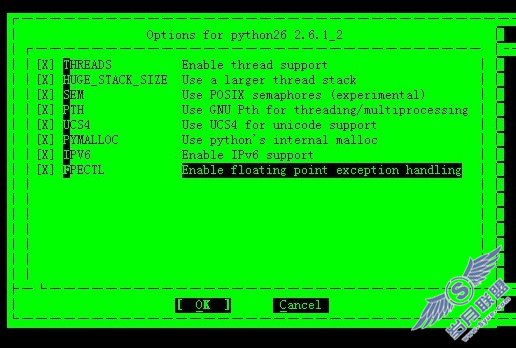chapter1:python 基础(数据类型,运算符,常用内置函数,模型,strings等)
来源:岁月联盟
时间:2012-09-13
import java.util.*;
/**
*实现的堆的插入和删除操作
* @author Arthur
*/
public class Heap {
/**
* 递归实现
* 删除一个堆中一个数据的时候,根据堆的性质,应该把相应的位置下移,才能保持住堆性质不变
* @param a 保持堆元素的数组
* @param index 被删除的那个节点的位置
*/
public static void heapDown(List heap, int index) {
//因为第一个位置存储的是空值,不在考虑之内
int n = heap.size() - 2;
//记录最小的那个儿子节点的位置
int child = -1;
//2*index>n说明该节点没有左右儿子节点了,那么就返回
if (2 * index > n) {
return;
} //如果左右儿子都存在
else if (2 * index < n) {
//定义左儿子节点
child = 2 * index;
//如果左儿子大于右儿子的数值,取右儿子的下标
if ((Integer) heap.get(child) > (Integer) heap.get(child + 1)) {
child++;
}
}//如果只有一个儿子(左儿子节点)
else if (2 * index == n) {
child = 2 * index;
}
if ((Integer) heap.get(child) < (Integer) heap.get(index)) {
//交换堆中的child,和index位置的值
swap(heap, child, index);
//完成交换后递归调用,继续下降
heapDown(heap, child);
}
}
//非递归实现
public static void heapDown2(List heap, int index) {
int child = 0;//存储左儿子的位置
int temp = (Integer) heap.get(index);
int n = heap.size() - 2;
//如果有儿子的话
for (; 2 * index <= n; index = child) {
//获取左儿子的位置
child = 2 * index;
//如果只有左儿子
if (child == n) {
child = 2 * index;
} //如果右儿子比左儿子的数值小
else if ((Integer) heap.get(child) > (Integer) heap.get(child + 1)) {
child++;
}
//如果数值最小的儿子比temp的值小
if ((Integer) heap.get(child) < temp) {
//交换堆中的child,和index位置的值
swap(heap, child, index);
} else {
break;
}
}
}
/**
* 删除堆中最小的值,也就是删除位置是1的值,也就是根节点的值
* 操作原理是:当删除根节点的数值时,原来的位置就会出现一个孔
* 填充这个孔的方法就是,把最后的叶子的值赋给该孔,最后把该叶子删除
* @param heap
*/
public static void deleteMin(List heap) {
//把最后的一个叶子的数值赋值给1个位置
heap.set(1, heap.get(heap.size() - 1));
//下滤操作
heapDown2(heap, 1);
// heapDown(heap, 1);
//把最后一个位置的数字删除
heap.remove(heap.size() - 1);
}
public static void main(String args[]) {
List array = new ArrayList(Arrays.asList(null, 1, 2, 5, 10, 3, 7, 11, 15, 17, 20, 9, 15, 8, 16));
//deleteMin(array);结果是2 3 5 10 9 7 11 15 17 20 16 15 8
insert(array, 0);//结果是0 2 1 10 3 7 5 15 17 20 9 15 8 16 11
print(array);
}
//打印链表
public static void print(List list) {
for (int i = 1; i < list.size(); i++) {
System.out.print(list.get(i) + " ");
}
}
//把堆中中的a,b位置的值互换
public static void swap(List heap, int a, int b) {
//临时存储child位置的值
int temp = (Integer) heap.get(a);
//把index的值赋给child的位置
heap.set(a, heap.get(b));
//把原来的child位置的数值赋值给index位置
heap.set(b, temp);
}
//向堆中插入元素
public static void insert(List heap, int value) {
heap.add(value);
//开始上升操作
heapUp2(heap, heap.size() - 1);
// heapUp(heap, heap.size() - 1);
}
//上升,让插入的数和父节点的数值比较,当大于父节点的时候就和节点的值相交换
public static void heapUp(List heap, int index) {
//注意由于数值是从小标为一开始,当index = 1的时候,已经是根节点了
if (index > 1) {
//保存父亲的节点
int parent = index / 2;
//获取相应位置的数值
int parentValue = (Integer) heap.get(parent);
int indexValue = (Integer) heap.get(index);
//如果父亲节点比index的数值大,就交换二者的数值
if (parentValue > indexValue) {
//交换数值
swap(heap, parent, index);
//递归调用
heapUp(heap, parent);
}
}
}
//非递归实现
public static void heapUp2(List heap, int index) {
int parent = 0;
for (; index > 1; index /= 2) {
//获取index的父节点的下标
parent = index / 2;
//获得父节点的值
int parentValue = (Integer) heap.get(parent);
//获得index位置的值
int indexValue = (Integer) heap.get(index);
//如果大于就交换
if (parentValue > indexValue) {
swap(heap, parent, index);
}
}
}
}
下一篇:python文件操作实例
